The Quito vihuela
 |
||
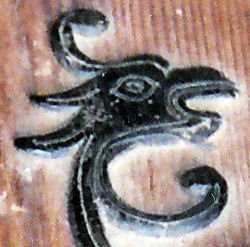 |
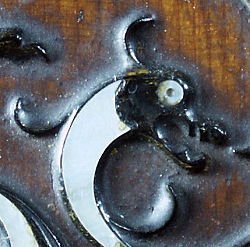 |
 |
Above: Rear edge of the Quito vihuela bridge showing signs of wear in the areas of the first (single), second, third and, to a lesser degree, forth courses. There is very little, if any, noticeable wear of the edge in the areas of the fifth and sixth courses. A V- shaped upper edge of the slots (from the second to six courses) could well be designed with the intention of helping to spread individual strings in courses next to the sides of the slots. Note that the rounded corners of the slots for the fourth, fifth and sixth courses have greater radii than those of the second course. It almost seems that they were shaped to accept larger and smaller string diameters accordingly. Below: Comparison of carved decorations in the shape of stylized animal's head of the Quito vihuela and Juan Pages guitar, Cádiz 1803 (collection of James Westbrook, Brighton). |
||
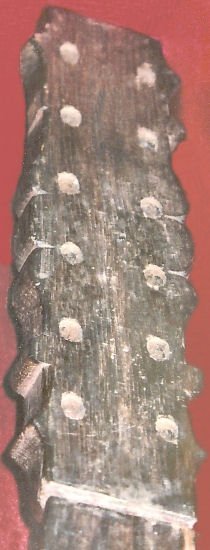 |
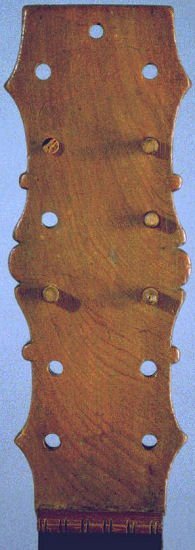 |
Peg heads of the Quito (left) and an anonymous E. 0748 ‘Chambure’ vihuela (right) reveal an obvious resemblance in design patterns. This fact was first brought to attention, back in 1998, by Joël Dugot in his article Un nouvel exemplaire de vihuela au musée de la musique (in Luths and Luthyistes en Occident, Actes du colloque 13-15 mai 1998, Cité de la Musique, Paris 1999), pp 307-317. |
|
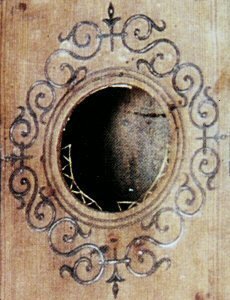 |
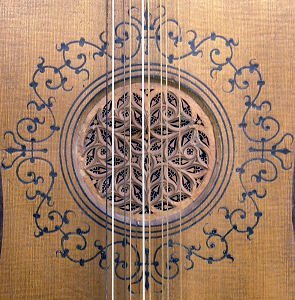 |
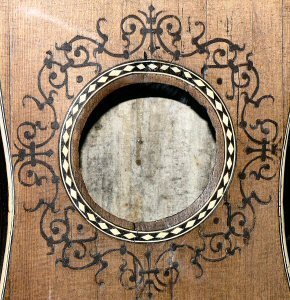 |
From
left: Inlay design surrounding the sound hole of
the Quito vihuela shows resembling patterns with at least two other
surviving instruments: Italian early 17th century guitar with a possible
attribution to the Sellas workshop, Venice (collection of the Edinburgh
University); Italian(?) 17th century guitar(?) – vihuela
(collection of the V&A museum, London). |
||
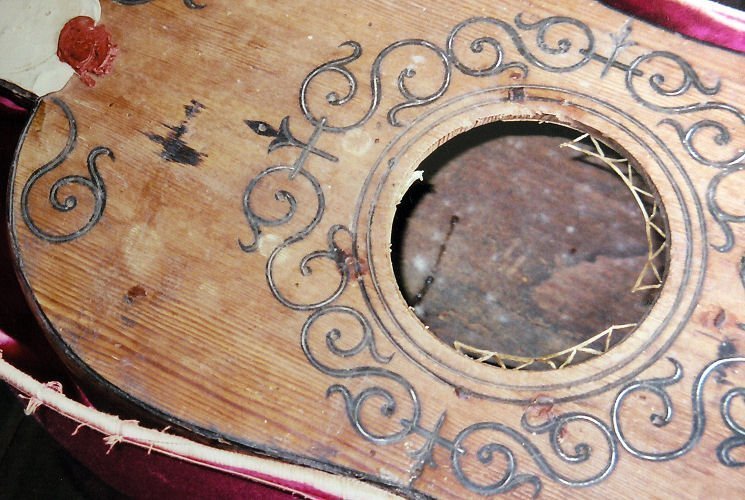 |
Silver
thread embedded in the middle of the veins of the inlayed ebony ornament
which surrounds the sound hole
of the Quito vihuela. |
| The images of the Quito vihuela illustrated on this page were kindly provided by Ariel Abramovich who visited Quito earlier this year and who is himself a dedicated professional player of the vihuela. Also many, many thanks to Diego Sentender, executive director at the Iglesia de la Compañía de Jesús, Quito (Ecuador), who allowed Ariel to examine this rare instrument. |
home vihuelas guitars viols contact
This page was first created on 30 November 2005.
© 2006 Alexander Batov